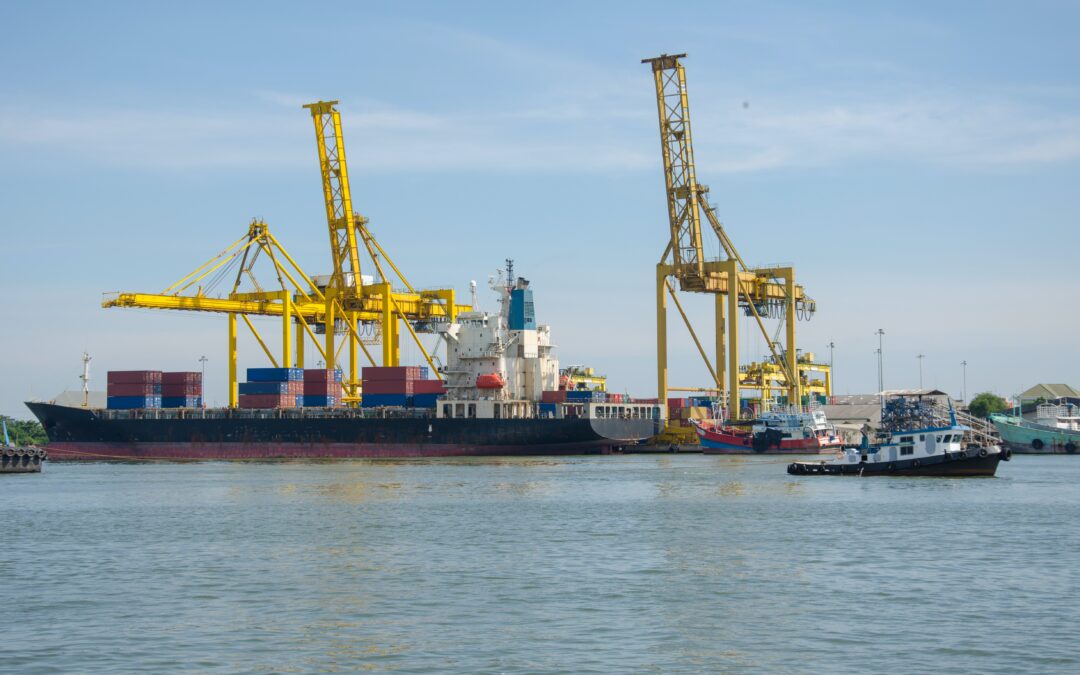Threats such as climate change have driven governments worldwide to establish marine protected areas (MPAs). These are sections of the ocean where activities are closely monitored, so as not to cause further harm to marine life. For example, certain MPAs focus on conserving habitats, while others give ecosystems a chance to recover after overfishing.
MPAs may seem fully safe from human activities. But some of them, particularly those directly within shipping routes, remain vulnerable due to port operations.
In this article, we’ll tackle the challenges posed by ports to MPAs, and explore the steps that can be taken to foster coexistence between the two.
Why are marine protected areas at risk of port operations?
Here are a few reasons why ports are considered a risk to MPAs:
Pollution and destruction due to anchored ships
While governments around the world have taken the initiative to monitor waste disposal in and near ports, ocean dumping still poses a threat to MPAs. Ships are often at anchor for days, during which crew may dump waste material into the water. These pollutants spread to ocean ecosystems, causing harm to habitats and potentially contributing to species loss.
Another issue is the act of anchoring itself. Anchors can disrupt the seabed and stir up the sediment, resulting in cloudy waters that limit the amount of light that enters the MPAs.
Noise pollution
Port congestion is a serious issue not only because of waste, but also the noise from ships. Since vessels can’t be unmanned due to the risk of drifting, power will have to be maintained while at anchor. This means ship operators must continue running their engines, generating underwater noise that disturbs MPAs and alters marine animals’ ability to communicate. For instance, ship noise can interfere with orca echolocation, making it hard for them to call other whales and find food.
Water pollution due to dredging
To accommodate large ships, ports carry out dredging—the process of deepening waterways. When this occurs, sediment is stirred up, resulting in reduced water clarity that affects the growth of marine flora. What’s more, it may cause stress on coral reefs within or near marine protected areas, potentially leading to their destruction.
Oil spills
Most people associate oil spills with ones that take place out in the open ocean. However, they can also occur due to accidents in ports, particularly during the loading and unloading of oil tankers, as well as refueling (like what transpired in Gibraltar).
How can ports coexist with marine protected areas?
While it may seem like a “one or the other” scenario, that is not the case. Port operators don’t need to halt their operations, and marine life doesn’t have to suffer. Certain steps can be taken to foster coexistence, and it primarily involves minimizing the impact of port operations.
Reduce port congestion
This is the key to tackling multiple challenges at a time, particularly those that stem from anchoring. Ports should strive to be more efficient so they can cater to ships more swiftly. That way, they don’t have to stay idle near ports for an extended period.
And in case ships do need to wait to berth, ports can set “no anchorage” rules to protect MPAs from anchor drag. In this case, the bodies in charge of overseeing these areas can provide ports with information about the MPA’s exact boundaries.
Leverage emission monitoring technology
Modern tools grant ports and MPA-overseeing bodies the ability to monitor maritime emissions. Armed with real-time data, they can collaboratively plan operations (e.g., identify the ideal time for dredging) and change their course of action in case pollution levels reach critical levels. Thanks to these advanced technologies, they can clearly see how specific port operations may impact the environment.
Reroute ships or restrict speeds to reduce noise pollution
While ships can’t be 100% quiet, certain measures can be taken to reduce noise pollution. With the guidance of government bodies or conservation groups, port authorities can reroute ships away from MPAs. Or at the very least, they can require them to slow down when navigating certain waters.
A 2019 study found that a 10% speed reduction can lower underwater noise by about 40%. It also has the added benefit of lowering the risk of collisions with sea creatures such as whales.
Enhance port reception facilities for ship waste
Policies such as the Marine Protection, Research, and Sanctuaries Act (MPRSA) restrict ship operators from disposing of waste at sea. One of the best ways for ports to actively support these initiatives is by providing sufficient reception facilities for waste. This specifically applies to materials that ships are prohibited from discarding into the water, such as waste oil, ballast water, sewage, and more.
Create contingency plans for oil spills
Ports must be ready to provide immediate response in case of accidental oil spills. Governments can work alongside them to establish clear protocols and action plans, helping them swiftly contain oil spills and reduce harm to MPAs.
Hold dialogue among stakeholders
Open communication among stakeholders—such as port operators, government agencies, and local conservation groups—facilitates an exchange of critical information. For example, port operators can consult marine experts to better understand migration routes. In that way, they can make sure these pathways remain clear while reducing the risk of ship strikes.
Coexistence requires adaptability
In achieving coexistence between MPAs and ports, the responsibility heavily hinges on the latter. Through these strategies, ports can effectively alter their activities to conserve these at-risk ecosystems, without compromising their own operations. By doing so, they can show their commitment to the environment’s well-being, and conduct business in a socially responsible way.
Kat Sarmiento writes this article from Katreena’s Content Studio
You can reach out to her via email at katsarmiento.content@gmail.com


Recent Comments